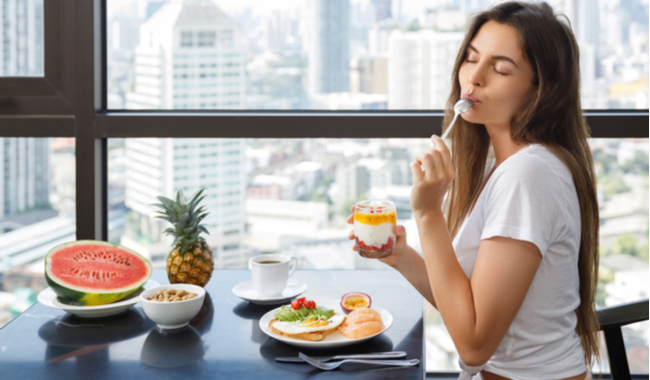Reintroducing Trigger Foods
Most “Type A” dancers have something in common when it comes to his or her relationship with food. Especially for those with a sparked interest in nutrition: Type A dancers love sticking to safe foods. Often times, these are highly nutritious, plant-based, and minimally processed (like the ones I mentioned above).
There’s absolutely nothing wrong with eating these foods. In fact, minimally processed plant-based foods are chock full of nutrients like vitamins, minerals, and phytochemicals. Also, they supply our body with fiber, which promotes a healthy gut, stabilizes our blood sugar, and even plays an indirect role in strengthening our immunity.
So, if they’re so good for our health, then what exactly is the issue with these foods?
When these are the only foods that you’re eating (without the guilt), problems arise. Indulgent options, whether that’s a side of fries, a slice of pizza, candy, or a decedent cupcake, become a battlefield of restrictions, guilt, fear, and anxiety.
Breaking food rules is the first step to combating diet restrictions. But what about challenge foods? Similar to learning a new style of dance, reintroducing your challenge foods often comes with an overwhelming layer of discomfort. To help guide you through, let’s discuss a few tips to tackle the process:
#1: Choose Your Time Wisely
In an ideal world, we have the time to sit down for a meal without screens, phones, and well, the stress of a busy schedule. When we eat without distraction, we’re more likely to enjoy our food mindfully. This mental presence brings awareness to our innate sense of fullness. The result? A natural ability to control portions.
But let’s be real… we are a generation of distractions! Running to class, sitting in a car, or crash-studying at 1 AM is likely not the best time to reintroduce your challenge foods. This is especially true if there’s an underlying fear of “once I start I won’t stop!” When I reintroduced pizza on days other than Saturday, I did it during times when I could enjoy the slice mindfully; for example, on a Monday evening. So, when you’re reintroducing these challenge foods, choose a time that allows you to eat without distraction.
#2: Create A Food Experience
You’ve set aside time. Now, pick a comfortable spot in your home, turn off your screens, power down your phone, and serve your challenge food with a plate, utensils, and a napkin. Creating this experience doesn’t just mean that you’re honoring your craving, it also means that you’re respecting your time and you’re fortunate ability to eat this delicious food. Sometimes, this experience may involve the addition of more food. For example, cereal is a common challenge food that leaves many feeling unsatisfied after just one bowl. Adding additional ingredients to your bowl can build a more satisfying experience. Top your cereal with nut butter or sprinkle a handful of nuts and flax to boost the satiating power of the meal.
#3: Just Start With 1
The process of intuitive eating is just that: a process.
Every opportunity to eat, especially when it’s a challenge food, is a chance
for you to create an experience that allows you to eat mindfully. Do this
systematically, rather than all at once. If you overdid it, then be
compassionate with yourself. It’s been a while since you enjoyed this food
guilt-free and therefore, it may take a while for you to overcome this
challenge.


